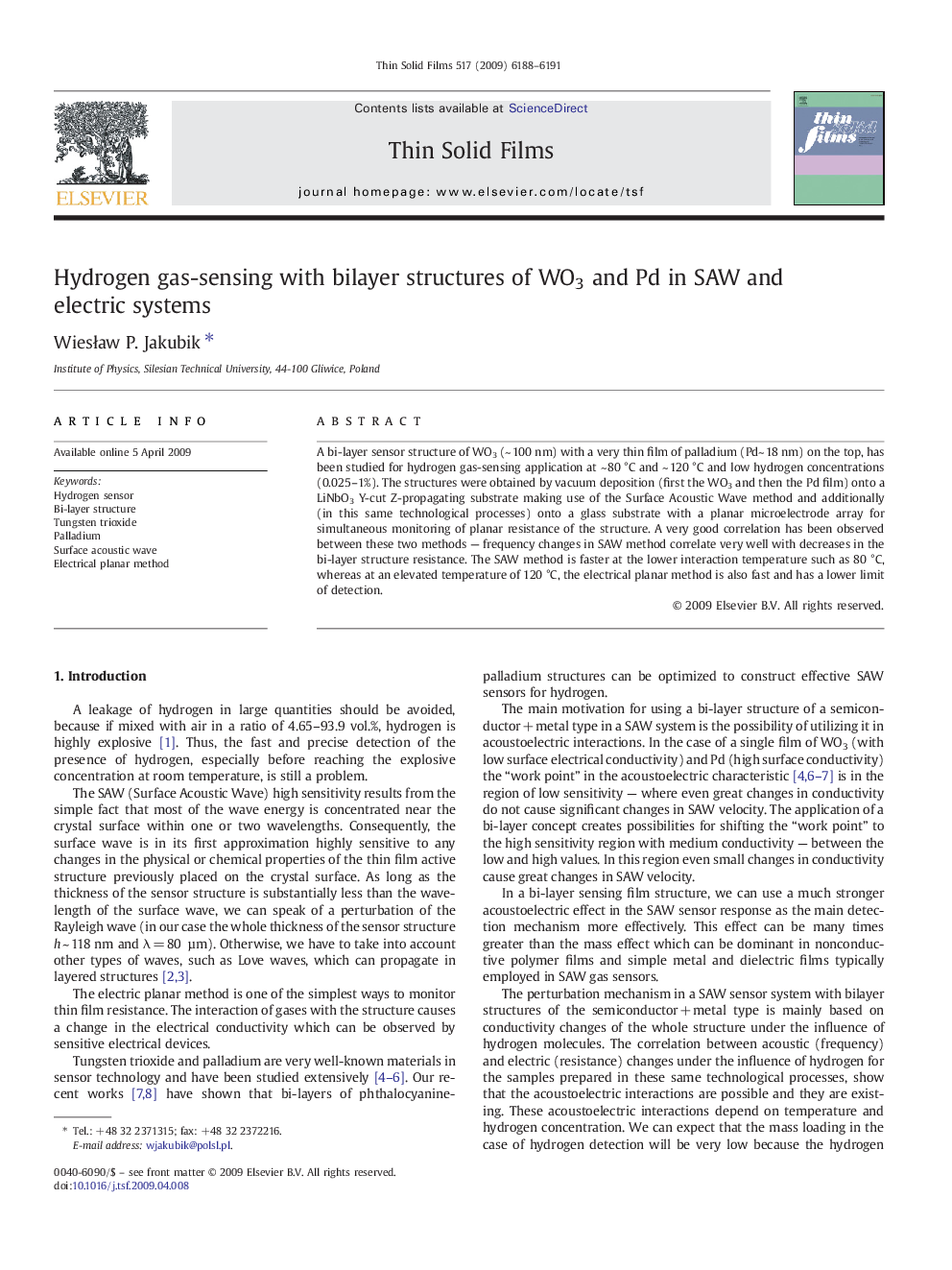| Article ID | Journal | Published Year | Pages | File Type |
|---|---|---|---|---|
| 1672288 | Thin Solid Films | 2009 | 4 Pages |
A bi-layer sensor structure of WO3 (~ 100 nm) with a very thin film of palladium (Pd~ 18 nm) on the top, has been studied for hydrogen gas-sensing application at ~ 80 °C and ~ 120 °C and low hydrogen concentrations (0.025–1%). The structures were obtained by vacuum deposition (first the WO3 and then the Pd film) onto a LiNbO3 Y-cut Z-propagating substrate making use of the Surface Acoustic Wave method and additionally (in this same technological processes) onto a glass substrate with a planar microelectrode array for simultaneous monitoring of planar resistance of the structure. A very good correlation has been observed between these two methods — frequency changes in SAW method correlate very well with decreases in the bi-layer structure resistance. The SAW method is faster at the lower interaction temperature such as 80 °C, whereas at an elevated temperature of 120 °C, the electrical planar method is also fast and has a lower limit of detection.
